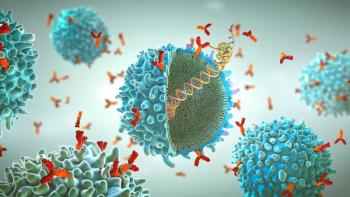
MIT Researchers Identify Compounds that Fight Viral Infections
Scientists at MIT and other institutions have discovered compounds that activate a defense pathway inside host cells that could be used as antiviral drugs.
The Massachusetts Institute of Technology (MIT) announced on July 14, 2025, that scientists at MIT, the University of California Santa Barbara, Integrated Biosciences, Illumina Ventures, and Princeton University have identified compounds that could be used as antivirals to fight multiple viruses (1). The compounds activated a defense pathway inside host cells called the integrated stress response pathway in a screen of nearly 400,000 molecules.
Upon human cell testing, the researchers found that the compounds help cells fight infection for respiratory syncytial virus (RSV), herpes virus, and Zika virus. The compounds also combated herpes infection in a mouse model. The researchers are planning to test the compounds against other viruses with the intention of developing them for future clinical trials.
“We’re very excited about this work, which allows us to harness the stress response of the host cells to arrive at a means to identify and develop broad-spectrum antivirals,” said James Collins, the Termeer Professor of Medical Engineering and Science in MIT’s Institute for Medical Engineering and Science (IMES) and Department of Biological Engineering, in a press release (1).
Potential antivirals
According to MIT, a human’s integrated stress response pathway is turned on in cells when faced with a viral infection or starvation (1). “During viral infection, the pathway is triggered by double-stranded RNA, a molecule produced during the replication cycle of viruses,” read a press release from MIT (1). “When that RNA is detected, the cell shuts down protein synthesis, which blocks the virus from producing the proteins it needs to replicate.” The researchers believe that compounds that boost the pathway may work as antivirals.
“Typically, how antivirals are developed is that you develop one antiviral for one specific virus,” said study lead author Felix Wong, former MIT postdoc and chief executive officer of Integrated Biosciences (1). “In this case, we hypothesized that being able to modulate the host cell stress response might give us a new class of broad-spectrum antivirals—compounds that directly act on the host cells to alter something fundamental about how all viruses replicate.”
Novel optogenetic screen
A novel optogenetic screen was developed by the study team to identify the compounds that would enhance the activity of the pathway during viral infection. Optogenetics, according to MIT, is a bioengineering technique in which light-sensitive proteins are inserted into the genome of a cell (1). For their research, the scientists engineered modifications to a the PKR protein that turns on the stress pathway for it to be turned on with light. The technique was used to screen nearly 400,000 commercially available and proprietary compounds that were each applied to human cells as they were exposed to blue light, stimulating a viral infection by activating PKR.
The researchers measured the cells’ survival rates to determine which compounds boosted activation of the pathway and increased the cells’ ability to stop viral reproduction (1). The scientists then evaluated 3500 compounds.
“If the pathway were turned on in response to viral infection, what our compounds do is they turn it on full blast,” Wong explained in the release (1). “Even in the presence of a small amount of virus, if the pathway is triggered, then the antiviral response is also maximized.”
Promising compounds to fight infection
Eight promising compounds were selected and screened for their ability to kill viruses while not harming human cells (1). These eight were narrowed down to three top candidates: IBX-200, IBX-202, and IBX-204. Treatment with these compounds in cells infected with either Zika virus, herpes virus, or RSV showed significantly reduced viral levels. IBX-200 was tested in mice infected with herpes virus and found to reduce the viral load and improve symptoms. The investigators now plan to evaluate these candidates against a broad range of viruses and possibly identify other compounds.
A paper detailing the discovery was published in Cell (2), authored by Collins, Maxwell Wilson, associate professor of molecular biology at the University of California Santa Barbara and chief scientific officer of Integrated Biosciences, Wong, and other scientists from Integrated Biosciences, Illumina Ventures, University of California Santa Barbara, Princeton University, MIT, and Harvard University.
References
- MIT. Scientists Discover Compounds That Help Cells Fight a Wide Range of Viruses. Press Release. July 14, 2025.
https://news.mit.edu/2025/scientists-discover-compounds-helping-cells-fight-wide-range-viruses-0714 - Wong, F.; et al. Optogenetics-Enabled Discovery of Integrated Stress Response Modulators. Cell July 11, 2025. DOI:
10.1016/j.cell.2025.06.024
Newsletter
Stay at the forefront of biopharmaceutical innovation—subscribe to BioPharm International for expert insights on drug development, manufacturing, compliance, and more.




